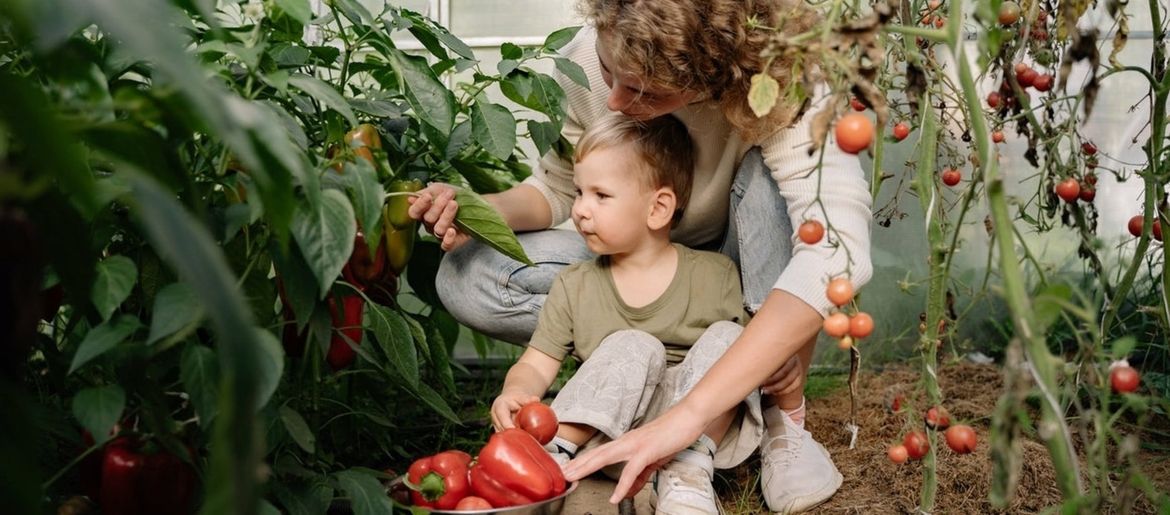Why Now Is The Right Time To Prepare Your Tomato House
The tomato ABC
Although tomatoes only need about six weeks to mature from seeds to young plants, get your greenhouse in shape now. These are the important points to keep in mind.
A nice environment
Who likes moving into a neglected apartment? Nobody - not even tomato plants. In order to be able to offer them a feel-good environment in your greenhouse, pay particular attention to the following points:
- Do not dig up the soil, simply loosen it and weed it thoroughly. Unlike digging, loosening does not destroy soil life. Instead, it allows beneficial creatures to survive in the soil and continue to do their work. And it's a lot less tiring for you ;)
- Work compost into the soil. Tomatoes are heavy feeders with very high nutritional requirements. Therefore, they need humus-rich soil. The Bokashi method is also a great way to feed hungry plants.
- Enrich the soil with seaweed and horn shavings. Algae lime counteracts acidification of the soil, promotes long-term nutrient availability and loosens it. Wood chips also contribute to loose soil.
- To prevent fungal diseases, spray the bed with horsetail broth just before your plants move in.
The right start
Tomato plants are sensitive souls that make quite a few demands. When your tomato plants have reached a height of around 20-25 cm and have formed 2-3 flowers, it's the right time to move to the greenhouse. The little divas want you to stick to the following list:
- Plant the plants about 6 inches deeper into the soil than they were in the nursery pot.
- As a starter gift, add nettle liquid manure to the planting hole. This is the optimal fertiliser, which supplies them with important nutrients, strengthens them and makes them more resistant to diseases.
The Big 4 of tomato care
Cleanliness, watering, mulching and pinching - these are the Big 4 things to consider if you want to grow vigorous tomato plants with numerous fruits.
Tomatoes attach great importance to hygiene and should therefore only be touched by clean hands, and disinfected tools and climbing aids.
Tomatoes are, in the truest sense of the word, sensitive plants when it comes to water. Their leaves do not tolerate moisture, which is why tomatoes should never be watered from above. Instead, water directly at the root with tempered rainwater or stagnant tap water.
Once the plants have reached a certain height, it is even advisable to remove the leaves from the ground up to a height of around 40cm to avoid any risk of splashing water (we recommend wearing disposable gloves).
Admittedly, tomato plants that are defoliated underneath don't look particularly sexy. You can remedy this dull appearance by planting marigolds underneath. This will, at the same time, build up naturally effective protection against pests and nematodes.
When watering, be careful not to soak the soil or let it dry out completely. By the way, tomatoes often burst due to overwatering.
To prevent water splashing onto sensitive leaves when watering, bury an unglazed clay flowerpot next to the plants and fill it with water. This gradually releases water into the soil and stops your plants ever becoming thirsty.
A thick layer of mulch is essential when caring for tomatoes. Leaves, straw and stripped tomato shoots are the ideal mulch material and should be spread generously over the soil.
Help tomato plants growing on climbing aids in cramped spaces in a greenhouse by removing exhausting side shoots. Simply snip off the unwanted shoots with sharp pruning shears, being careful not to accidentally snag a fruit shoot. Tip: These generally grow directly from the trunk, while shoots grow from the leaf axils.
With these tips, get through the season and look forward to lots of delicious tomatoes. We wish you lots of fun with the growing process and a rich harvest!
Related products
-
 5.0 (2)
5.0 (2)OJ Bron "Lada" Russian Flat Cutter
- Ideal for loosening the soil
- With blades on both sides
- Size: 128 x 16.5 x 16.5 cm
€ 94,99Delivery by January 07
-

ReinSaat "Anabelle" Cocktail Tomatoes
- Lat. Lycopersicon esculentum Mill.
- 2-3 cm fruit diameter
- Red, sweet fruits
€ 3,79Delivery by January 07
-

AUSTROSAAT Marigolds- "Calendula Balls Orange"
- Versatile use
- Calendula officinalis
- Filled out flowers
€ 2,29Delivery by January 07
-
 € 1,22 € 1,29 (€ 271,11 / kg)
€ 1,22 € 1,29 (€ 271,11 / kg)Delivery by January 07
Magazine Articles:
Discover Bloomling:
-
Austria: Free standard delivery from € 39,90
-
Free
returns -
24-hour shipping
More than 11.450 products

